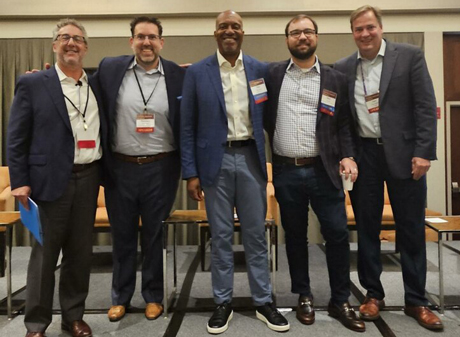CHICAGO — A big question hangs over the investment market: When will transaction activity pick up again? Seniors housing fundamentals are strong. Occupancies are recovering. New development is scarce. And demand is set to surge as a growing number of baby boomers turn age 80, the point at which senior living becomes an increasingly attractive option for older Americans.
But worries about inflation, the direction of interest rates, lack of debt capital and the fear of buying at the wrong price are curbing investment activity. In this uncertain environment, can investors generate positive returns?
That’s the big question a panel of executives addressed at Interface Seniors Housing Midwest, held June 26 at the Swissotel Chicago. The group participated in a session titled, “Will Transaction Activity Return in the Fourth Quarter and Where Are Cap Rates and Pricing?” Adam Heavenrich, managing director at Heavenrich & Associates, served as the panel moderator.
The other panelists included Alex Florea, managing director, Blueprint Healthcare Real Estate; Tim Sanders, senior vice president, Ventas; Michael Feinstein, managing director, Focus Healthcare Partners; and Dan Hermann, president and CEO, Ziegler.
Providing context for the discussion, moderator Heavenrich said concerns that the Federal Reserve will increase interest rates have largely disappeared. Inflation has cooled and wage hikes have slowed. No rate cuts have been made yet, but Heavenrich noted, “The Federal Reserve is signaling that things are getting under control.”
Against that backdrop, the panelists shared their investment strategies.
“Transaction volume is down,” said Feinstein. “That spells opportunity.” He explained that Focus Healthcare targets both stable and distressed properties. Much of the industry’s current deal flow comes from loan and covenant defaults, as well as approaching loan maturities, which can force a sale. Focus recently closed its second investment fund, raising $370 million. And the firm is now in the process of adding to its seniors housing portfolio. “We’re bullish,” said Feinstein.
Ziegler’s Hermann projects that 100 nonprofit entities in the seniors housing and care space will be converted to for-profit entities over a three-year period ending Dec. 31, 2024. That includes about 30 nonprofit campuses and 70 nonprofit skilled nursing facilities. “There’s a buyer’s market for skilled nursing,” he said.
The big healthcare REIT Ventas is mostly focused on single-asset transactions for stabilized properties. The acquisition strategy analyzes the market, the asset and the operator, in that order, according to Sanders. He said there are two pools of motivated sellers: those facing a debt maturity deadline, and investment funds reaching the end of their lifespan.
“We are cash buyers,” said Sanders, which he added is a big advantage in competitive bidding situations. Year to date, Ventas has closed on transactions valued in total at more than $300 million.
Sanders also noted that Ventas is expanding its relationships with operators. Five years ago, the REIT had eight operating partners. That number has grown to 26. “We learned that changing operators is disruptive,” he said, adding that operations are a regional business. “Market knowledge comes with the operator.”
Weighing in with the broker’s perspective, Blueprint’s Florea said a number of deals are closing, but big portfolios are a notable exception. The way to sell a portfolio today is to break up the properties and sell them separately. Debt is limited along with the pool of buyers. “Transaction volume is down in terms of dollar amount,” he said.
It’s harder to make deals work, the panelists agreed. Cap rates are hard to define. Historically, commercial real estate was purchased on the promise of what the property would be worth when the business plan is executed. Now properties are being bought at their current value.
Prior to the pandemic, Ventas was buying properties based on the forward-looking, one-year-adjusted net operating income (NOI). Now Ventas calculates pricing based on the trailing three-month NOI. “That has been a huge factor bringing down valuations,” he said.
Hermann added that lender pressure to sell is also lowering valuations. He expects the nonprofit side of senior living to resolve its financial troubles by the end of 2024.
“We have a number of multi-facility providers who are very strong and are accumulating single-site operators,” said Hermann, adding that freestanding, nonprofit skilled nursing facilities are going to die out.
Deals take more time to put together largely because of the shortage of debt and equity capital. “There are just fewer dollars and fewer players,” said Feinstein of Focus. Raising equity takes more time too. The firm raised 20 percent more for its new $300 million fund than it did for its previous fund. “But it took three times as much effort.”
“We had to have more meetings and get in front of more people,” he said. “If you can pull together capital when others can’t, it’s a good situation.”
Looking ahead, the investors don’t expect to be able to continue to raise rents as much as they have over the past two years. Annual rent growth was 4.4 percent as of the first quarter of 2024, according to NIC MAP Vision. “The growth of NOI will depend on technology to reduce operating costs,” said Sanders. The panelists concurred that transaction activity should start to pick up as long as interest rates don’t rise, and inflation continues to cool.
— Jane Adler

